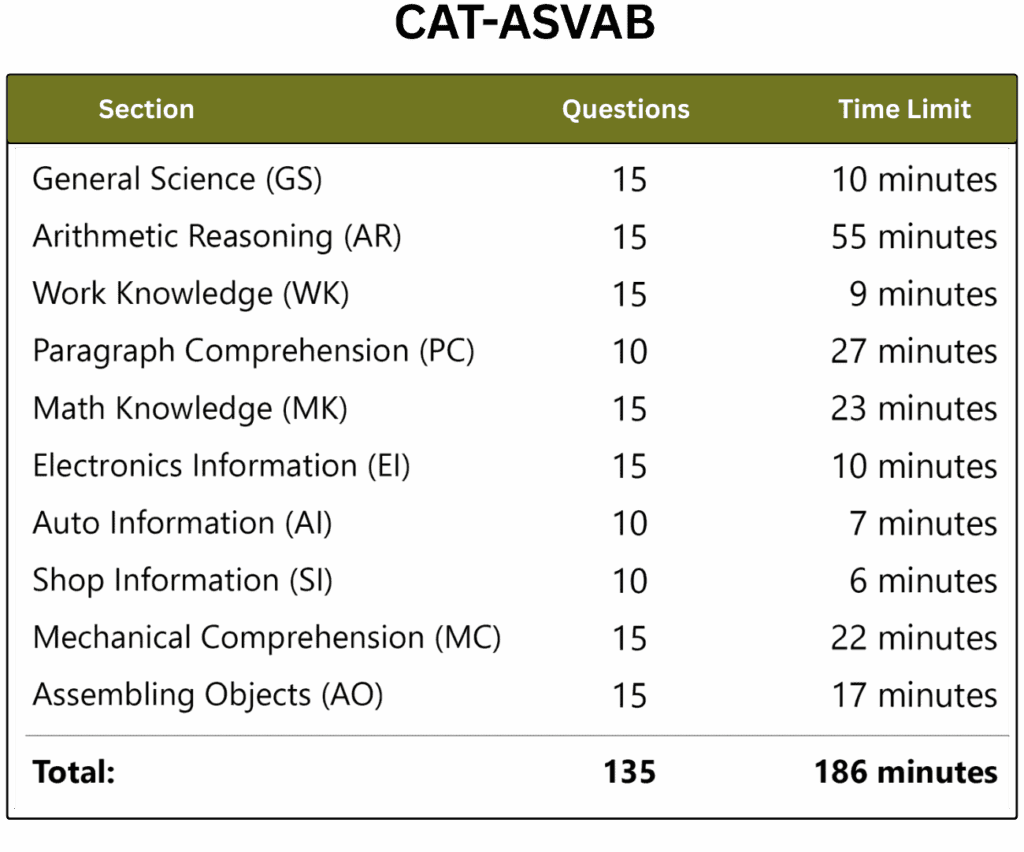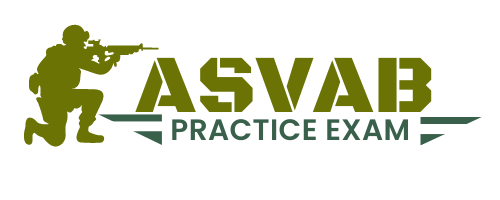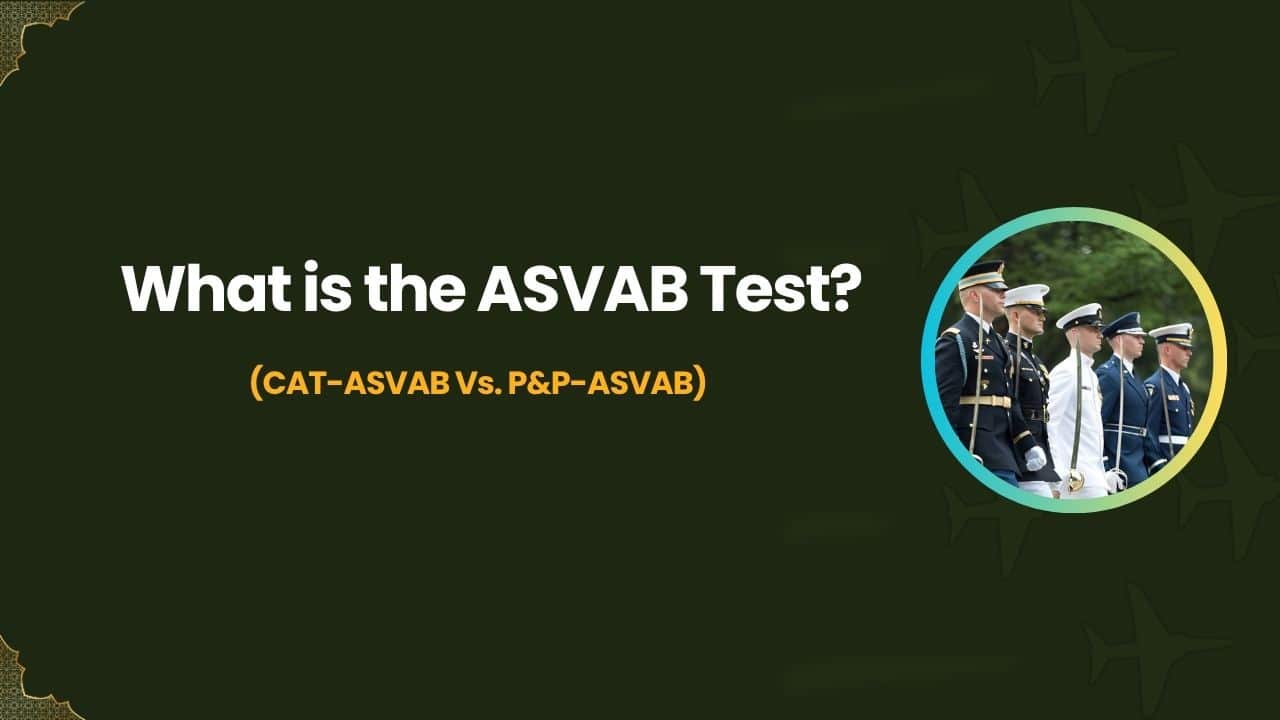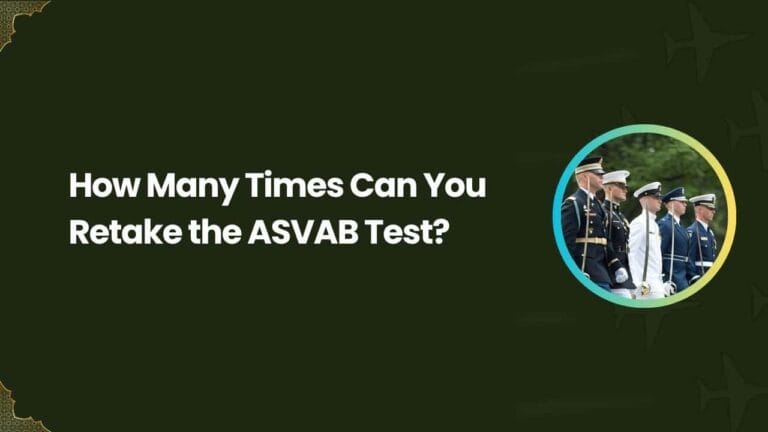What Is The ASVAB Test? The Definitive Guide!
The ASVAB stands for Armed Services Vocational Aptitude Battery, a standardized multiple-choice test administered by United States Military Entrance Processing Command. The test is often offered to the high school students when they’re in the 10th, 11th, and 12th grade, though anyone eligible can take the ASVAB test.
The ASVB test is used by US Army, Air Force, Navy, Marine Corps, and Coast Guard. It helps the recruitment officers to determine individual’s suitability across the various branches of service or specific military jobs.
How Many Questions are on the ASVAB Exam?
The ASVAB (Armed Services Vocational Aptitude Battery) is offered in two main formats: the CAT-ASVAB (Computerized Adaptive Test) and the P&P-ASVAB (Paper-and-Pencil Test). While both versions measure the same skills, the number of questions and time limits vary slightly
CAT-ASVAB
The CAT-ASVAB is the most widely used version, taken by about 90% of test-takers. It is an automated system that presents questions, records responses, scores the subtests, and calculates the AFQT score.
- Number of Questions: 135
- Time Limit: 186 minutes
- Where It’s Taken: Military Entrance Processing Stations (MEPS)
- Purpose: Used exclusively for enlistment in the U.S. Armed Forces

Because it is adaptive, the difficulty of the questions may adjust based on your responses as you progress through the test. If the correct answer is chosen, the next question will be harder.
P&P-ASVAB
The P&P-ASVAB is the traditional version of the test, typically administered at high schools or other testing locations. Unlike the computerized version, it is not adaptive, meaning every test-taker answers the same set of questions.
- Number of Questions: 225
- Time Limit: 149 minutes
- Where It’s Taken: Schools, MET (Military Entrance Test) sites, or special testing locations
- Purpose: Used for enlistment and career exploration

In the paper version, you can skip questions and return to them later, but there is no penalty for guessing. Every unanswered question is simply marked incorrect, so it’s always best to attempt every question before time runs out.
What’s on the ASVAB Test?
The ASVAB is designed to measure a candidate’s strengths in various academic and technical areas. It consists of multiple subtests, each assessing a different skill set. These subtests help determine both the AFQT score and specific line scores for military job placements.
Below is a breakdown of each section, including the number of questions and time limits:
1. General Science (GS) – 16 questions | 8 minutes
Tests basic knowledge of biology, chemistry, physics, and earth sciences. Questions are concept-based and do not require advanced calculations.
2. Arithmetic Reasoning (AR) – 16 questions | 39 minutes
Focuses on solving math word problems using basic arithmetic operations.
3. Word Knowledge (WK) – 16 questions | 8 minutes
Measures vocabulary by asking you to identify synonyms for given words, sometimes presented in context.
4. Paragraph Comprehension (PC) – 11 questions | 22 minutes
Assesses reading comprehension skills. You’ll read short passages and answer questions about the main idea, details, and inferences.
5. Mathematics Knowledge (MK) – 16 questions | 20 minutes
Covers high school-level algebra and geometry concepts.
6. Electronics Information (EI) – 16 questions | 8 minutes
Tests knowledge of electricity, including circuits, resistance, conductivity, and basic electronic components.
7. Auto and Shop Information (AS) – Auto: 11 questions | 7 minutes Shop: 11 questions | 6 minutes
Measures knowledge of automotive systems, tools, and shop practices. Often includes diagrams where you must identify parts or tools.
8. Mechanical Comprehension (MC) – 16 questions | 20 minutes
Focuses on principles of mechanics and physics, including Newton’s laws, simple machines, force, power, and hydraulics.
9. Assembling Objects (AO) – 16 questions | 16 minutes
A visual-spatial section where you choose the correct way pieces would fit together when assembled.
Each subtest contributes to specific line scores that help determine eligibility for various military occupations. Additionally, four subtests—Arithmetic Reasoning, Word Knowledge, Paragraph Comprehension, and Mathematics Knowledge—combine to form your AFQT score, which is crucial for enlistment.


